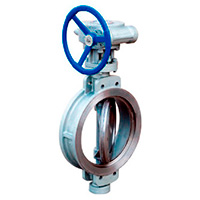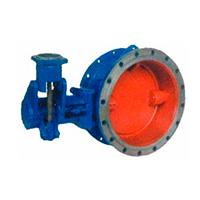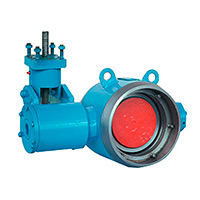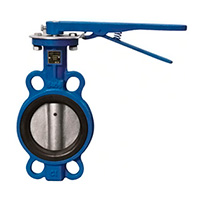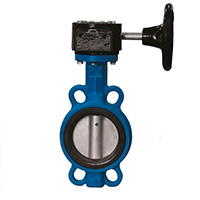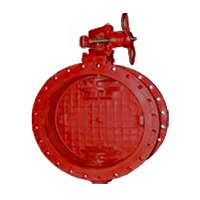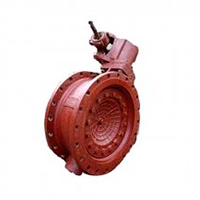Butterfly Valves
Description of Section "Butterfly Valves"
Butterfly valves are a type of pipeline valves used to regulate or shut off flow of the working medium (liquid, gas, steam) in pipelines. They have become widely popular due to their compactness, simple design, and ease of operation.
Design and main components of butterfly valves
- Body
- Valve body is typically made of cast iron or steel. It has a cylindrical shape and houses all internal components.
- Body may be coated with protective epoxy compounds to prevent corrosion and resist aggressive environments.
- Disc
- Disc is a shut-off element and can have a flat or double-convex (lens-shaped) design.
- Discs may be coated with various materials to enhance their corrosion resistance.
- Stem
- Stem, on which the disc rotates, is usually made of steel. It transfers the force from the actuator to the disc.
- Sealing
- Seals ensure the valve's tightness and can be made from various materials: EPDM, NBR and others. The choice of material depends on the operating conditions and the properties of the working medium.
Operating principle
- In the closed position, disc is perpendicular to the flow of the working medium, blocking its movement.
- When the butterfly valve is opened, the disc rotates 90 degrees and becomes parallel to the flow, allowing the medium to pass freely through the valve.
Butterfly valves are classified according to several parameters:
- By mounting type:
- Flanged
- Wafer
- Threaded
- By actuator type:
- Manual
- Electric
- Hydraulic
- Pneumatic
- By disc design:
- Symmetrical
- Double eccentric
- Triple eccentric
Butterfly valves are widely used in various industries, such as water supply, heating, gas supply, chemical industry, and many other fields.
